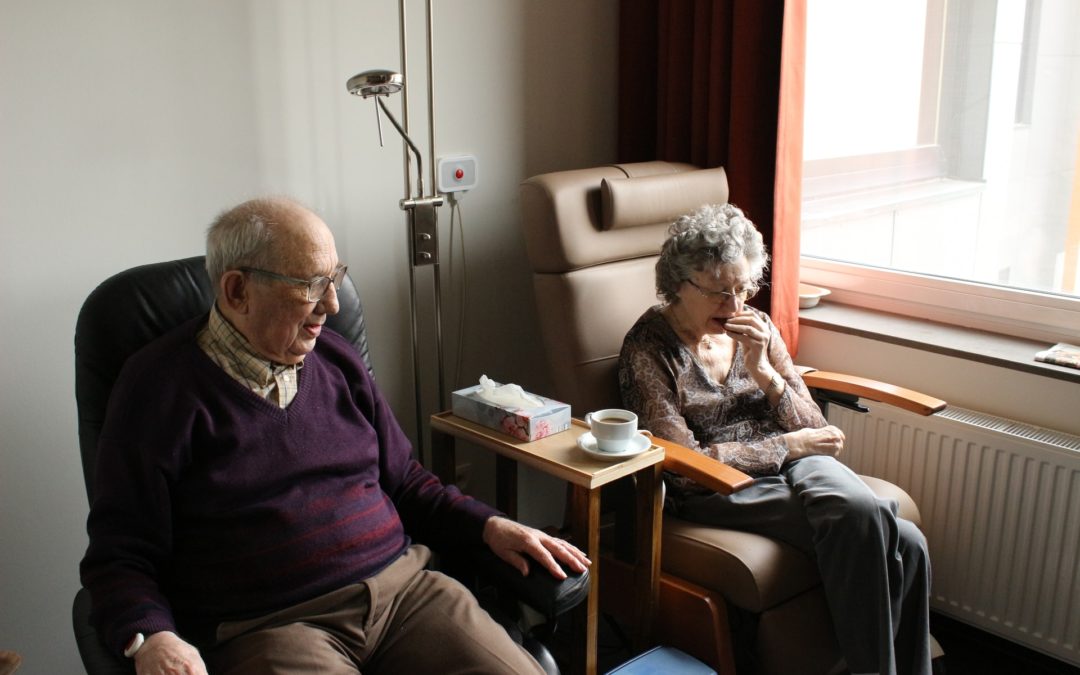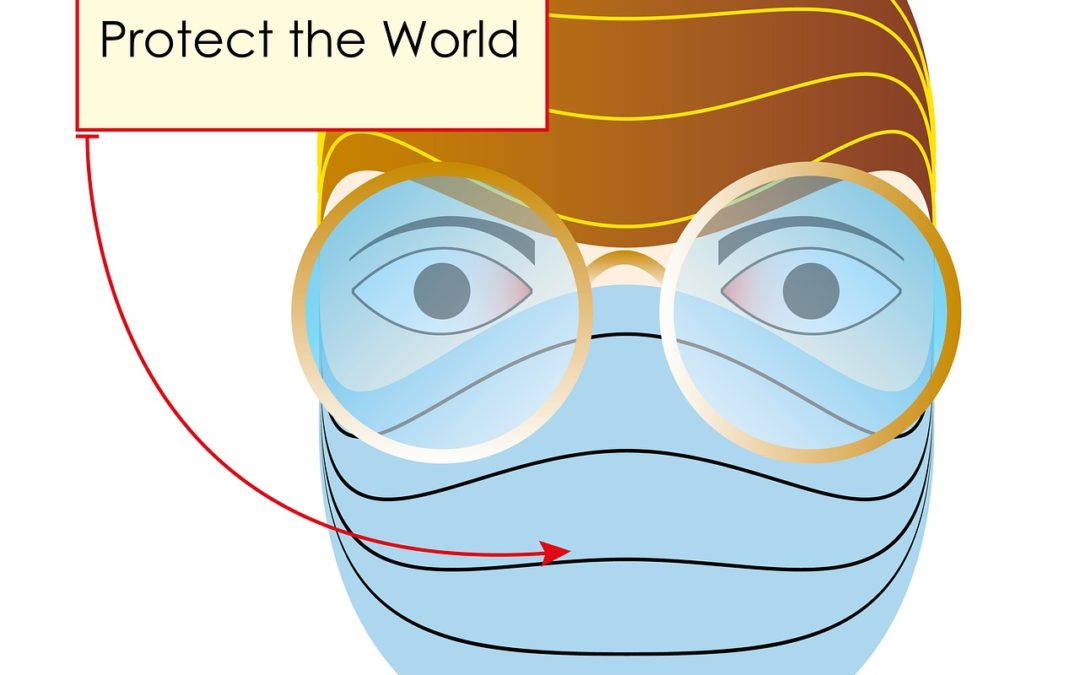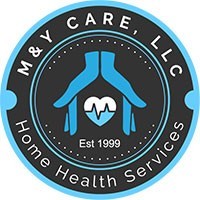
by M | May 21, 2020 | News |
After an immense disruption from the COVID-19 virus led to a dip in patient visits and revenue, home-based care insiders are now reporting budding signs of normalcy.
The public health crisis, of course, is far from over. But the initial panic is subsiding, patients are receiving care again and providers are gaining confidence operating in a coronavirus-dominated environment.
“Generally, I think things have started to [become] a little bit more normalized, if you can use that word in this environment,” Darby Anderson, a vice chairman for the Partnership for Medicaid Home-Based Care (PMHC), said on a recent webinar hosted by Home Health Care News.
This sentiment is beginning to take hold across the in-home care arena. Pennant Group Inc. (Nasdaq: PNTG) leadership, for instance, reported significant March and April troubles during the company’s Q1 earnings call, but shared May was offering reasons to be optimistic.
“So far in May, we are seeing signs of improvement in our home health census stabilization,” Pennant President and CEO Danny Walker said on the call.
While home-based care has viewed itself as a critical part of the COVID-19 solution from the outset of the outbreak, its role is about to change, according to Anderson, who also serves as the chief strategy officer at Addus HomeCare Corporation (Nasdaq: ADUS).
“Home care [has served] as a rear front in the war on COVID-19,” he said. “And I think that’s really an apt description of where we’ve been at — keeping people at home, keeping people out of institutions … and limiting the exposure of very vulnerable patients from contracting the virus. I think that rear-front position is about to shift, though. And I think it’s going to shift toward getting people out of the hospital, getting people cared for at home and providing that activities-of-daily-living (ADL) support, which is going to be critical in keeping them at home.”
Home-based care providers experienced a drop in visit volume once a public health emergency was declared, mostly for two reasons: patient fear of outside infection and elective surgeries being put on hold.
Nearly 80% of all home-based care agencies have experienced a decrease in admissions, with a majority of agencies reporting reductions greater than 15%, according to a recent survey from the National Association for Home Care & Hospice (NAHC).
In the interim, that has triggered more low-utilization payment adjustments (LUPAs) for home health agencies. Both home care and home health providers have had to operate through restricted cash flow.
Now, as older adults’ fear of infection wanes — or at least the need for care overrides it — an uptick in visits is likely on the horizon. A return of elective procedures will also return a sense of normalcy.
“We’ve been very fortunate as an industry to be in the place we are in,” Peter Ross, the CEO of Senior Helpers, also said on the webinar. “The focus was trying to keep people cared for at home before the virus, and I think the virus has even added more emphasis to that going forward. I always thought home care was recession-adverse, and I think we’re finding that home care is also somewhat virus-adverse — but not without changes.”
The search for positivity
Personal protective equipment (PPE) took center stage in a lot of the initial conversation involving the COVID-19 response.
But after spending two and a half months in “PPE anonymous,” Ross joked, providers are beginning to figure out the quirks of the procurement process.
“I think it will [continue to] get better over time,” Ross said. “I think it’s starting to settle in.”
Senior Helpers has the advantage of being a larger organization, which allows it to coordinate mass buys. For smaller agencies looking for PPE, that road has been tougher, but made easier with the help of home-based care associations across the U.S.
“I give kudos to a number of the state associations for home care and home health services across the country for stepping up and getting coordinated buys to make sure that those smaller members were able to get in the game for PPE,” Anderson said.
Stringent PPE requirements are one thing that both Ross and Anderson believe will be here for the long haul, even after a COVID-19 vaccine is widespread. Having those resources to keep staff safe will go a long way for recruiting purposes.
And despite the additional risks that now come with working on the front lines of health care, an uncertain labor market has meant more people are applying to home-based care jobs than less, Anderson said.
“Surprisingly, I’m hearing that we’re seeing people come in and apply for jobs,” Anderson said. “It’s too early to tell if it is workers who have been displaced in other industries or [what]. But I honestly would have thought that there’d be no new recruitment going on, and that’s not at all what I’m hearing.”
According to the U.S. Department of Labor (DOL), more than 30 million unemployment claims have been made since the first week of March.
The face-to-face requirements that usually coincide with the hiring process have been relaxed by the Centers for Medicare & Medicaid Services (CMS). That has also helped facilitatie new hires during the COVID-19 crisis.
That governmental attention being paid to home care, in general, has been a welcomed development.
“Even at the congressional level, there’s been a number of proposals that have contemplated, ‘What about home- and community-based care? What about home care services?’” Anderson said. “We’re normally [not included] in a lot of that discussion in the bigger health care picture. So, maybe this crisis has developed into an opportunity to really educate people on what the services that we’re providing are — and how they can be better coordinated [moving forward].”
By Andrew Donlan | May 17, 2020
Source: Home Health Care News

by M | May 19, 2020 | News |
Physicians, health care experts and the media spent considerable time focused on hospital capacity since the start of the COVID-19 crisis. Nursing homes received less attention, until thousands of deaths revealed a shocking risk for older adults and those who care for them.
Another sector receiving little attention are home care services – direct care workers, including personal care assistants and home health aides, nurses and therapists – those who render treatment in the patient’s home. Over 5 million people in the U.S. currently receive paid home care. And now, not only must home care continue for older adults, and for those with disabilities, but many people with COVID-19 will need it too.
We are geriatricians who have worked in acute and post-acute care settings. We have all witnessed the stress COVID-19 is placing on our health care system. And we appreciate the incredible need for home care workers. But how can workers, and those they care for, stay safe? COVID-19 could complicate and compromise care for millions of people whose care already was imperiled.
Even before COVID-19, there weren’t enough home care workers. Thousands of people with COVID-19 who don’t require hospitalization may need home care, and those who are hospitalized with the virus will need home care post-discharge. Some older adults, less willing to move into nursing homes in view of the tens of thousands of deaths in nursing homes, may opt for home care. And people with underlying medical conditions, perhaps now less inclined to go to the hospital, may choose home care too.
The immediate expansion of home care services will lessen the stress on our health system during the pandemic – and also let us envision what health care might look like after the pandemic is over.
One thing to consider is the health of the home care workers themselves.
Those caring for vulnerable older adults are often themselves vulnerable. About 90% of the home care workforce are women who have not completed college. Nearly 60% belong to racial or ethnic minority groups with a disproportionately high rate of illness and death from COVID-19. One in five lacks health insurance. And only one-third of home care workers are employed full-time. The median age for home care workers is 49 years of age; they are paid a median of US$12 an hour; and more than 1 in 4 have no health coverage themselves.
Consequently, many workers travel to multiple homes to piece together full-time work. That increases the risk of bringing the virus into the homes of frail older adults. At the same time, these essential workers are themselves at risk because of their exposure to multiple individuals. These factors limit the number of workers willing and able to provide home care.
The 10 recommendations
It’s crucial to care for the health of these workers as well as the recipients of their care. Until this is fixed, there clearly is a public health problem. Based on our research, here are 10 recommendations we think could help:
–
Home care workers need access to personal protective equipment (PPE).
–
Home care workers and their clientele need regular COVID-19 testing.
–
Home care workers need full-time positions with paid sick leave. Federal funds are needed, because most home care agencies can’t cover these costs.
–
Particularly during a pandemic, more flexibility is needed as to how care is given. Already, there have been changes: Telehealth is now allowed for home health agencies. Non-physician practitioners can now order home health services. Allowing virtual training for home health aides would go further.
–
The Centers for Medicare and Medicaid Services (CMS) could expand the definition of “home health” to include “personal care.” This would help clients who are socially isolated and perhaps free up the overcrowding in nursing homes. Right now, Medicare does not currently pay home care workers if they provide only personal care (e.g., bathing, dressing).
–
CMS could expand its definition of “homebound” so more could qualify for home care services.
–
Federal funding for community health workers (CHWs) should be implemented.
–
More home care workers need to be recruited, perhaps from industries experiencing significant layoffs such as retail and food services. These individuals would need to be trained for their new roles.
–
With the needs of an aging population becoming more complex, home care workers are doing more complex tasks once reserved for RNs (registered nurses) and LPNs (licensed practical nurses). As they perform these tasks, home care workers need to be trained, authorized and compensated.
–
Overall, there is a profound deficit in training for home care workers. With our new normal upon us, this new workforce needs a career ladder with growth opportunities. For example, these workers can obtain baseline training with additional expertise and competencies, such as how to care for a COVID-19 patient or one recovering from it, that can then be compensated.
The quality of patient lives depends on the quality of the caregiving they receive. We cannot return to past ways of doing business. The pandemic offers us the opportunity to expand the home care workforce to benefit those they serve. After all, a crucial part of valuing our older adults is to value those who care for them.
Madhuri Reddy, Harvard University | Published 9:02 am EDT, Monday, May 18, 2020
Source: Westport News

by M | May 16, 2020 | News |
On Tuesday, House Democrats unveiled the Health and Economic Recovery Omnibus Emergency Solutions (HEROES) Act, the latest COVID-19 stimulus bill. Of note for home-based care providers hoping to keep their front-line staff, the proposed relief package includes a $200 billion fund for essential worker hazard pay.
Increasingly, the coronavirus has placed home-based care workers on the front lines, caring for a mix of COVID-positive patients and seniors practicing social distancing. As these front-line jobs have become more challenging, many advocates have begun to call for additional compensation for performing duties that are possibly dangerous to workers.
“I would love to see something like government-supplemented hazard pay for health care workers dealing with COVID-19,” Interim HealthCare Inc. CEO Jennifer Sheets previously told Home Health Care News. “We need to incentivize people to be on the front line, especially in a pool that’s already prone to high turnover.”
At an estimated $3 trillion in total, the newly proposed stimulus bill would be the largest relief package in history.
Broadly, the bill faces a steep climb in terms of winning over Republicans, who have argued more time is needed to evaluate the relief measures that have already been passed. Still, it represents a crucial next step in responding to the COVID-19 emergency at the federal level, Robert Espinoza, vice president of policy at PHI, told HHCN.
“This bill is especially important because it provides hazard pay … and a whole range of supports that home care workers need, in general, but especially at this frightening moment,” he said. “Many states are reporting that they don’t have enough funds, at this moment, to adequately fund home care agencies and workers.”
Overall, the stimulus bill would provide nearly $1 trillion for state and local governments.
New York-based PHI is a direct-care workforce advocacy organization.
Washington, D.C.-based LeadingAge, a national trade association for a variety of senior care organizations, likewise described the House bill as a potentially helpful tool for in-home care stakeholders.
“The appropriately-named HEROES Fund provides appreciation pay for all of these essential front-line workers who are so often under-recognized,” Aaron Tripp, vice president of reimbursement and financing policy at LeadingAge, told HHCN. “Providing care in the home limits the number of people involved in delivering needed services, an important consideration during this pandemic.”
In addition to hazard pay, the stimulus package also includes a new employee retention tax credit, provides $10 billion for COVID-19 emergency grants, and mandates that the Occupational Safety and Health Administration (OSHA) must issue standards that require workplaces to create infection-control plans.
Prior to the announcement of hazard pay under the HEROES Act, some home care providers have taken matters into their own hands, coming up with incentives for caregivers working in the field.
Companies such as CareFinders Total Care, Interim HealthCare and Concordia Lutheran Ministries have implemented similar appreciation pay for their workers, while Preferred Care Home Health Services provided its caregivers with food and other essentials.
In the weeks after the coronavirus outbreak started to surface in full, Congress passed a number of relief packages, including the CARES Act and the Families First Coronavirus Response Act (FFCRA).
Additionally, some providers have utilized the Paycheck Protection Program (PPP), a loan program for small businesses made available through the CARES Act, to fund hazard pay for caregivers.
If the HEROES Act passes, the availability of hazard pay for caregivers would have a long-term impact on the home care industry workforce, according to Espinoza.
“We are in a moment of a growing workforce shortage,” Espinoza said. “COVID-19 has exacerbated that shortage. Measures like hazard pay and other forms of compensation strengthen the workforce and pipeline of new workers coming into the home care sector.”
The U.S. House of Representatives will reportedly convene to vote on the proposed legislation on Friday.
Previous statements made by some Republican leaders suggest there could be at least some support within the party for a bill that features hazard pay. For example, Mitt Romney — a former Massachusetts governor with a vast business background — recently hinted that the concept of hazard pay was gaining traction among Republicans, according to the Washington Post.
“It strikes me that we’re open to considering a wide array of opportunities to help people that are serving the public,” Romney told Washington Post reporters. “And a number of individuals have expressed an openness to considering different ideas.”
By Joyce Famakinwa | May 13, 2020
Source: Home Health Care News

by M | May 14, 2020 | News |
For many, the COVID-19 virus and accompanying shelter-in-place orders means a worsening of mental or behavioral health conditions. For seniors already grappling with depression or anxiety, the outbreak has likely only compounded issues further.
With that in mind, many home health companies — including AccentCare and Elara Caring, two of the largest providers in the country — are working double-time on their behavioral health services.
Overall, about 47 million Americans have reported having a mental illness in the past year, according to statistics from the Kaiser Family Foundation (KFF). More than 11 million have had a mental illness that caused functional impairment and restricted life activities.
Seniors are especially vulnerable to stress associated with COVID-19, as they have a higher risk of facing severe illness from contracting the virus.
Since the start of the public health emergency, roughly half of surveyed adults in the U.S. believe their mental health has suffered from stress related to the COVID-19 virus, according to KFF.
“We’ve definitely seen escalated concerns — stress, fear, anxiety — caused by the COVID crisis,” Scott Powers, CEO of Elara Caring, told Home Health Care News.
Addison, Texas-based Elara Caring is a home health, hospice and personal care services provider with roughly 225 locations across 16 states. The provider serves more than 60,000 patients in total.
AccentCare has likewise seen a worsening of behavioral and mental health conditions. Additionally, there are numerous risk factors associated with being homebound that may uniquely impact older adults, Dave Davis, chief clinical innovation officer at AccentCare, told HHCN.
“We are already dealing with patients who, for the most part, are homebound oftentimes due to other functional disabilities,” Davis said. “There was already a layer of disconnect from their usual activities of daily living and communities. And then on top of this, having further isolation definitely exacerbates depression as well as anxiety.”
Dallas-based AccentCare has over 170 locations across the U.S. As a company, it provides skilled home health and personal care services, along with hospice care, private-duty nursing and care management services.
AccentCare’s behavioral health practice makes up about 13% of its home health visits, according to Davis.
Tackling social isolation
In the weeks after the COVID-19 public health emergency was officially declared, health authorities and other experts began recommending that people practice social distancing.
By mid-March, states began mandating shelter-in-place orders, with the closure of non-essential businesses and citizens receiving instructions to stay at home as much as possible to curb the spread of the virus.
While these measures are crucial in keeping individuals safe and healthy, they may also inflame the problems of isolation and depression. From 2017 to 2018, about 17 million adults had a major depressive episode, according to KFF.
AccentCare and Elara Caring aren’t the only home health providers to identify behavioral and mental health as red flags at this point in time. Behavioral health is also top of mind for insurance giant Humana Inc. (NYSE: HUM), which runs home-based care businesses Humana At Home and Kindred at Home.
“We’re seeing just a massive amount of depression and anxiety,” Humana CMO Dr. William Shrank previously told HHCN. “If you’re already depressed, there’s a good chance your condition is exacerbated. If you’re anxious at baseline, there’s a good chance that your condition is going to be exacerbated.”
When it comes to depression, seniors face the additional risk of being misdiagnosed and undertreated, as many seniors mistakenly assume their symptoms are general signs of aging.
In response to COVID-19, Elara Caring has addressed depression and other mental health challenges for its patients at home by redirecting many of the company’s resources. The goal: to find and communicate with high-risk seniors.
“One of the models we have employed, because we are uniquely positioned here, is an outreach team,” Powers said. “These aren’t necessarily paid outreaches. This is just doing the right thing and tracking these folks to make sure they get the care they need. And if they are not, seeing how we can help.”
This method has also allowed Elara Caring to regain patients who began canceling visits due to the fear of allowing a clinician into their homes, according to Powers.
“In addition to our telehealth platform, we’ve used our caretinuum platform, which is a clinical- and service-based outreach platform, to call people who have declined service,” Powers said. “We walked them through what we can do to protect them. We converted many of those folks, and they’ve allowed us to come into their homes.”
Elara Caring has loaded up on personal protective equipment (PPE) to ensure the safety of these home visits, he noted.
Elara Caring is a home health company that has built a dedicated behavioral health practice — making a name for itself in the process.
Currently, Elara Caring’s behavioral health business line operates in Connecticut, Massachusetts and Texas, with a census of about 4,000 patients. The company has plans to expand its behavioral health segment into five other states by the end of the year, according to Powers.
Similarly, AccentCare has taken a high-touch-point approach with its patients, especially with those who may have ceased receiving care in the home due to the COVID-19 virus.
“Any of the capacity that our existing behavioral health nurses may have because of patients who were deferring care — we rallied around those nurses and talked with them specifically about addressing patients who were deferring visits,” Davis said. “They began the outreach to those patients to ensure they get the necessary care and services.”
In order to accomplish this, AccentCare similarly leaned on telehealth.
“Being able to do a ‘keep-in-touch’ type virtual visit with the patients … was a way to interrupt some of the isolation from COVID-19,” Davis said.
While AccentCare hasn’t yet seen an uptick in behavioral health patients, the company anticipates that the public health emergency will eventually change this.
“We have always applied standardized screening tools related to depression and anxiety,” Davis said. “When any of our clinicians go out there using a standardized tool, they would help determine if a patient needs additional intervention. We do anticipate that, even patients who were doing well before, may not be doing as well now.”
Looking ahead, being able to receive care for mental health in the home setting will be more important than ever, according to Powers.
“The needs for these types of services will continue to grow,” he said. “We don’t see that these facility-based systems are going to be able to care for these people in the way they need. We are firm believers that if we can help these people in place, … this care model will excel and be effective.”
By Joyce Famakinwa | May 12, 2020
Source: Home Health Care News

by M | May 11, 2020 | Blog |
You can reduce your chances of being infected or spreading COVID-19 by taking some simple precautions:
- Regularly and thoroughly clean your hands with an alcohol-based hand rub or wash them with soap and water. Why? Washing your hands with soap and water or using alcohol-based hand rub kills viruses that may be on your hands.
- Maintain at least 1 metre (3 feet) distance between yourself and others. Why? When someone coughs, sneezes, or speaks they spray small liquid droplets from their nose or mouth which may contain virus. If you are too close, you can breathe in the droplets, including the COVID-19 virus if the person has the disease.
- Avoid going to crowded places. Why? Where people come together in crowds, you are more likely to come into close contact with someone that has COIVD-19 and it is more difficult to maintain physical distance of 1 metre (3 feet).
- Avoid touching eyes, nose and mouth. Why? Hands touch many surfaces and can pick up viruses. Once contaminated, hands can transfer the virus to your eyes, nose or mouth. From there, the virus can enter your body and infect you.
- Make sure you, and the people around you, follow good respiratory hygiene. This means covering your mouth and nose with your bent elbow or tissue when you cough or sneeze. Then dispose of the used tissue immediately and wash your hands. Why? Droplets spread virus. By following good respiratory hygiene, you protect the people around you from viruses such as cold, flu and COVID-19.
- Stay home and self-isolate even with minor symptoms such as cough, headache, mild fever, until you recover. Have someone bring you supplies. If you need to leave your house, wear a mask to avoid infecting others. Why? Avoiding contact with others will protect them from possible COVID-19 and other viruses.
- If you have a fever, cough and difficulty breathing, seek medical attention, but call by telephone in advance if possible and follow the directions of your local health authority. Why? National and local authorities will have the most up to date information on the situation in your area. Calling in advance will allow your health care provider to quickly direct you to the right health facility. This will also protect you and help prevent spread of viruses and other infections.
- Keep up to date on the latest information from trusted sources, such as WHO or your local and national health authorities. Why? Local and national authorities are best placed to advise on what people in your area should be doing to protect themselves.
Advice on the safe use of alcohol-based hand sanitizers
To protect yourself and others against COVID-19, clean your hands frequently and thoroughly. Use alcohol-based hand sanitizer or wash your hands with soap and water. If you use an alcohol-based hand sanitizer, make sure you use and store it carefully.
-
- Keep alcohol-based hand sanitizers out of children’s reach. Teach them how to apply the sanitizer and monitor its use.
- Apply a coin-sized amount on your hands. There is no need to use a large amount of the product.
- Avoid touching your eyes, mouth and nose immediately after using an alcohol-based hand sanitizer, as it can cause irritation.
- Hand sanitizers recommended to protect against COVID-19 are alcohol-based and therefore can be flammable. Do not use before handling fire or cooking.
- Under no circumstance, drink or let children swallow an alcohol-based hand sanitizer. It can be poisonous.
- Remember that washing your hands with soap and water is also effective against COVID-19.
Source: World Health Organization





